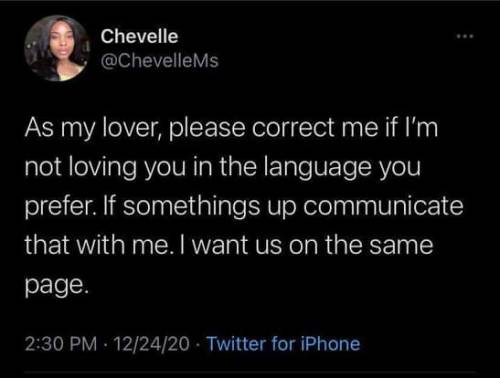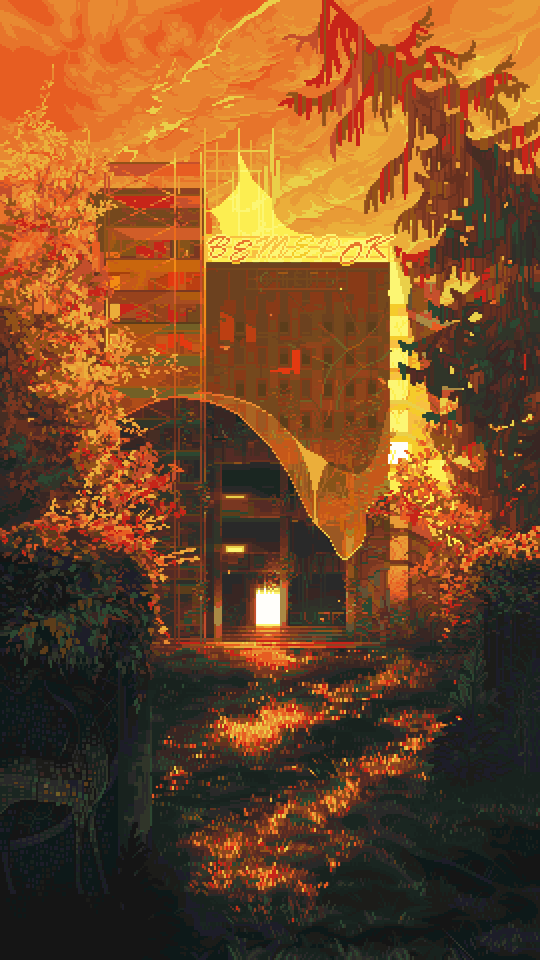Getting Into Fandoms The Time That It Was Popular Is Overrated Anyway
getting into fandoms the time that it was popular is overrated anyway
More Posts from Alwayswritingfanfiction and Others

PSA: bot comments are taking over ao3





The above examples have been provided with the authors' permission to demonstrate what these look like.
Basic rundown:
They are all 3 sentences long
Perfect grammar, capitalization, and punctuation
Like absolutely flawless English teacher-style writing with only a single exclamation mark, ever
No mentions whatsoever of character names, settings, situations, or anything that could be tied to the story
The usernames may be identical to people who exist on ao3, but the name is not clickable, and no profile is associated with it EXCEPT when you directly search for that name. What this means: the comments come from an unregistered (not logged in) reader, bots scrape the site for real usernames, attach that to the comment, and post
Please spread the word about this so authors can filter comments and report them accordingly
There has been some speculation about why this is happening at all, and the best guess is that this is a feature that AI-training story-scraping tools are implementing to try and make their browsing traffic look legitimate
ICYMI, there was fear that companies were scraping public AO3 fics to train their AI without the consent of AO3 or its users. That fear has been confirmed.
AO3 has written about what they’re doing (and what they’re not able to do), and they recommend restricting your work to AO3 registered users only. [Instructions here]
This gross misuse of the archive by techbros is why I’ve locked down my fics for the foreseeable future. I recommend the rest of you do the same.
An artist : Aw man! I saw my arts were reposted on Instagram. I’ve asked them to take my arts down but they ignored me.
Me : Say no more! Click this link, then click ‘fill out this form’. Fill the form and wait for about 1-2 days, the staffs will remove the image you were reporting from the reposter’s account :^)
obsessed with sokka’s name kinda popping up everywhere in school books years after atla. like yeah ur learning history about the end of the hundred year war? oh right with the avatars amazing team and some non bender named sokka who probably wasn’t all that important. on to gym class where u learn different fighting styles, did you know btw that the first guy to ever train with the kyoshi warriors was some random guy named sokka? oh well. can’t be late for physics where we learn about the invention of the air balloon and the submarine by … sokka? huh okay I guess, on to politics where we learn about all these important decrees over all the different nations which were first proposed by.. ah man, sokka? again? anyway art class now, here look at these paintings made by sokka

Writing Quick Tips: Quotation Marks + Punctuation
There are numerous quirky quotation mark placement + punctuation rules. For the common cases, such as basic dialog, most people know what to do, but we often see people get the less common cases incorrect, so we’ve put together a quick guide to help out!
Note that this post is written according to standard US English usage. The rules are different for other English dialects!
Basic—Punctuation + Quotation Marks in Dialog:
When writing dialog, the punctuation goes inside the quotation marks in the vast majority of cases. (Almost always, but I know if I say “always” someone will find an exception, ‘cause there’s always an exception, because English, why?)
Ex. 1: “Thank you,” she said.
Ex. 2: “Thank you.” She reached out and shook my hand.
Ex. 3: “Thank you!” she said.
Ex. 4: “Thank you?” she said uncertainly.
Ex. 5: “Thank you…” she muttered.
Ex. 6: “Thank y—” A loud pop interrupted her.
Essentially: If the punctuation is part of what’s being said (is demonstrating some aspect of how the dialog has been said) then it goes inside the quotation marks. (The most common exception relates to em dashes—more on that below!)
Intermediate—Punctuation + Quotation Marks in Narrative Text:
In narrative/descriptive text, the placement of punctuation depends on two factors:
a. Which punctuation is in question
b. The nature of the text within the quotation marks.
The basic rules are (this is paraphrased from CMoS 17th Ed.):
Periods: always inside the quotation marks
Ex.: The art of repairing cracked pottery with gold is called “kintsugi.”
Commas: always inside the quotation marks
Ex.: The art of repairing cracked pottery with gold is called “kintsugi,” and the practice originated in Japan.
Semi-colon: always outside the quotation marks
Ex.: The art of repairing cracked pottery with gold is called “kintsugi”; it is also called “kintsukuroi.”
Colon: always outside the quotation marks
Ex.: Other materials can be used for the art of repairing cracked pottery with gold, usually called “kintsugi”: silver and platinum are also sometimes utilized.
Question Marks: depends on what is in quotes. If the quoted material includes the question mark, then it goes inside of the quotes; otherwise, it goes outside the quotation marks.
Ex. 1: Is the art of repairing cracked pottery with gold called “kintsugi”?
Explanation: “kintsugi” isn’t a question, the entire phrase is the question, so the question mark goes outside the quotation marks.
Ex. 2: The article is entitled “Do you have questions about repairing cracked pottery with gold?”
Explanation: the title of the article is itself a question—the question mark is part of the quoted material, and therefore goes inside the quotation marks.
Exclamation Points: work the same way as Question Marks.
Ex. 1: I just learned that the art of repairing cracked pottery with gold is called “kintsugi”!
Ex. 2: The article is entitled “Everything you ever wanted to know about ‘kintsugi’ but hadn’t thought to ask!”
Em Dash: depends on what is in the quotes. If the purpose of the em dash is to denote that the words themselves are being interrupted, the em dash goes inside the quotation marks. If the purpose of the em dash is to mark that a specific action (sans dialog tag!) is interrupting the dialog, then the em dashes go outside. (Sorry this is a little challenging to describe, hopefully the examples help make it clear.)
Ex. 1: “The art of repairing cracked pottery with gold is called—” She broke off when she saw I was holding up a sign that said “kintsugi,” indicating that I already knew.
Explanation: the dialog itself is what is breaking off—in this case because the speaker is being interrupted—so the em dash goes inside the quotation marks.
Ex. 2: “The art of repairing cracked pottery with gold”—she held up a beautiful bowl that appeared to have once been broken, a tracery of gleaming gilding showing where the fault lines once were—“is called ‘kintsugi.’”
Explanation: when an action is interjected into the middle of a line of dialog, the em dashes go on the outside of the quotes.
Ex. 3: “The art of repairing cracked pottery with gold,” she explained as she held up a beautiful bowl, “is called ‘kintsugi.’”
Explanation: this instance has a dialog tag, so commas are used instead of em dashes. The first comma goes within the quotation marks, the second outside.
Advanced—Punctuation + Nested Quotation Marks in Dialog:
Sometimes, a character quotes something they’ve heard. In cases like this, the writer needs to use nested quotation marks (in standard US English, that’s double quotes “” for the first “layer” of dialog and single quotes ‘’ for the second “layer”). The relationship of the punctuation to the nested quote depends on what’s being said. When the dialog is nested, where the punctuation goes follows the same rules as in the “Intermediate—Punctuation + Quotation Marks in Narrative Text” section just above.
Ex. 1: “Did she say ‘Thank you’?” she asked.
Ex. 2: “Did he say ‘Thank you’ to you?” she asked
Ex. 3: “Did he say ‘Thank you,’ or did he say ‘tanks for you’?” she asked
Ex. 4: “How dare he say ‘Thank you’!” she exclaimed.
Ex. 5: “He said ‘Thank you,’” she replied.
Ex. 6: “He said ‘Thank you,’ I think?” she replied.
Ex. 7: “He said ‘Thanks’ and also ‘good luck.’” She nodded as she explained.
Ex. 8: “Actually, he said ‘Thanks!’” she replied.
Ex. 9: “Actually, he asked ‘Should I thank them?’” she replied.
Other Uses of Quotation Marks
Quotation marks can also be used when identifying the titles of works, scare quotes, defining words in foreign languages, etc. Regardless of the uses, the above rules about punctuation placement apply.
So, now you know. :D
Go forth and Write All The Things!
*
Have a writing question? Drop us an ask on Tumblr!
Love what we do? Consider supporting us on Patreon, ko-fi, or by shopping our store!

🍂
Age 3, Toga had her hair put up in messy buns, and dressed in cute, frilly clothing.

Her outfit looks to be a two-piece - shirt and skirt - complete with a little bow-tie and additionally frilly socks.
I don't think 3-year-olds can coordinate and dress into an outfit such as this without adult help; and to get her hair buns, there definitely needed to be an adult to style her hair.
So this was Toga, age 3, having been fussed over by her parents, who took time and attention to dress her in pretty outfits and brush her hair for her.
All this changed after she demonstrated the tendencies of her quirk, after her parents found her drinking the dead bird's blood:


In the first pic, she looks only slightly older than when she was in that frilly outfit - age 4 or 5, perhaps. She's several years older in the second pic - 8 years old, I'd say?
Her hair is being down is the most obvious change - her parents didn't take the time to style her hair anymore. They no longer help her put it in a hairstyle that would take an even few minutes of time and effort.
But her clothing has also changed - her dresses are much more plain, and look to be simple things that can be easily slipped over the head.

Much like how Toga's old house showed that her parents stopped marking her height at around age 3, the way Toga is dressed as a child also possibly shows that after Toga manifested her quirk, her parents might have just since gave her minimum attention. Might have avoided touching her as much as possible.

Toga will continue to keep her hair down for years afterwards until age 15 (last year of middle school). By then, she'll be old enough to do her own hair, but she continued to keep her hair down and straight. It's associated with 'normal' for her, the 'normal' that she's told to follow. It's part of the mask she wore, it's how she suppressed herself.
Once she ran away, though, once she's free from her house, and the 'normalcy' she was performing, Toga has her hair out in messy buns again:

And even in her imagine spot after her heart is saved by Ochako, she pictures herself with the same hair style.


more how to train your dragon
-
 socks-001 liked this · 2 years ago
socks-001 liked this · 2 years ago -
 vesterport liked this · 2 years ago
vesterport liked this · 2 years ago -
 thejuveniledelinquent liked this · 2 years ago
thejuveniledelinquent liked this · 2 years ago -
 eerie-night liked this · 2 years ago
eerie-night liked this · 2 years ago -
 johannakhalafalla liked this · 2 years ago
johannakhalafalla liked this · 2 years ago -
 nenehyuuchiha liked this · 3 years ago
nenehyuuchiha liked this · 3 years ago -
 puwwup liked this · 3 years ago
puwwup liked this · 3 years ago -
 saturnplanets liked this · 3 years ago
saturnplanets liked this · 3 years ago -
 bowlingwithplanets liked this · 3 years ago
bowlingwithplanets liked this · 3 years ago -
 sloth-fox liked this · 3 years ago
sloth-fox liked this · 3 years ago -
 toxicgamersiffrin liked this · 3 years ago
toxicgamersiffrin liked this · 3 years ago -
 shenanogram liked this · 3 years ago
shenanogram liked this · 3 years ago -
 bluarlequinno liked this · 3 years ago
bluarlequinno liked this · 3 years ago -
 twizzlelutz liked this · 3 years ago
twizzlelutz liked this · 3 years ago -
 hiperactired liked this · 3 years ago
hiperactired liked this · 3 years ago -
 lemonys-snickers liked this · 3 years ago
lemonys-snickers liked this · 3 years ago -
 non-zero-echo liked this · 3 years ago
non-zero-echo liked this · 3 years ago -
 a8raxas liked this · 3 years ago
a8raxas liked this · 3 years ago -
 pop-elm liked this · 3 years ago
pop-elm liked this · 3 years ago -
 feathersfluff liked this · 3 years ago
feathersfluff liked this · 3 years ago -
 jokeryuri liked this · 3 years ago
jokeryuri liked this · 3 years ago -
 depressedtherapist liked this · 3 years ago
depressedtherapist liked this · 3 years ago -
 depressedtherapist reblogged this · 3 years ago
depressedtherapist reblogged this · 3 years ago -
 kkspider liked this · 3 years ago
kkspider liked this · 3 years ago -
 missracheldare liked this · 3 years ago
missracheldare liked this · 3 years ago -
 bakchoithefool liked this · 3 years ago
bakchoithefool liked this · 3 years ago -
 ashmcfly1 liked this · 3 years ago
ashmcfly1 liked this · 3 years ago -
 snakemurderer liked this · 3 years ago
snakemurderer liked this · 3 years ago -
 ducksritual liked this · 3 years ago
ducksritual liked this · 3 years ago -
 theballadear liked this · 3 years ago
theballadear liked this · 3 years ago -
 thecownamedcat reblogged this · 3 years ago
thecownamedcat reblogged this · 3 years ago -
 flamedoesart reblogged this · 3 years ago
flamedoesart reblogged this · 3 years ago -
 w-1nter liked this · 3 years ago
w-1nter liked this · 3 years ago -
 twotwentyfiveam liked this · 3 years ago
twotwentyfiveam liked this · 3 years ago -
 goditsbrutalout-here liked this · 3 years ago
goditsbrutalout-here liked this · 3 years ago -
 thyfish liked this · 3 years ago
thyfish liked this · 3 years ago -
 ksnsul liked this · 3 years ago
ksnsul liked this · 3 years ago -
 night-writ3r liked this · 3 years ago
night-writ3r liked this · 3 years ago -
 sadfransisko liked this · 3 years ago
sadfransisko liked this · 3 years ago -
 zaraaaaaa liked this · 3 years ago
zaraaaaaa liked this · 3 years ago -
 bodega-cheschirecat liked this · 3 years ago
bodega-cheschirecat liked this · 3 years ago -
 macabreafterparty liked this · 3 years ago
macabreafterparty liked this · 3 years ago -
 sleepyssnail liked this · 3 years ago
sleepyssnail liked this · 3 years ago -
 cluelesslesbian liked this · 3 years ago
cluelesslesbian liked this · 3 years ago -
 oversteepedminttea liked this · 3 years ago
oversteepedminttea liked this · 3 years ago

(SprinK/PhoeniX on AO3) mxtx and mha fics | she/her | hi, i don't know what I'm doing
241 posts